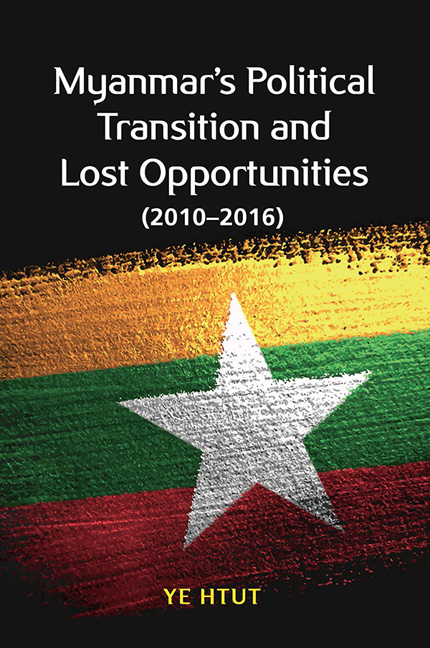Book contents
- Frontmatter
- Contents
- Foreword
- Acknowledgements
- Introduction: Myanmar's Political Reforms
- 1 The National Convention
- 2 The Constitution
- 3 The Union Solidarity and Development Party
- 4 Myanmar Spring and Aung San Suu Kyi
- 5 The Union Government
- 6 The Government and the Parliament
- 7 Shwe Mann's Checkmates
- 8 Turning Points
- 9 Media Reform
- Epilogue
- Appendix A President Thein Sein's Inaugural Address
- Appendix B President Thein Sein's First Address to the Cabinet
- List of Interviewees
- Index
- About the Author
- Plate section
6 - The Government and the Parliament
Published online by Cambridge University Press: 25 January 2020
- Frontmatter
- Contents
- Foreword
- Acknowledgements
- Introduction: Myanmar's Political Reforms
- 1 The National Convention
- 2 The Constitution
- 3 The Union Solidarity and Development Party
- 4 Myanmar Spring and Aung San Suu Kyi
- 5 The Union Government
- 6 The Government and the Parliament
- 7 Shwe Mann's Checkmates
- 8 Turning Points
- 9 Media Reform
- Epilogue
- Appendix A President Thein Sein's Inaugural Address
- Appendix B President Thein Sein's First Address to the Cabinet
- List of Interviewees
- Index
- About the Author
- Plate section
Summary
Structure of the Parliament (Hluttaw)
According to the constitution, there are two houses in the Union (federal, or pyidaungsu) level legislature, the Pyithu Hluttaw (lower house or people's assembly) and the Amyotha Hluttaw (upper house or house of nationalities). The Pyithu Hluttaw is elected on the basis of one member for each township. The Amyotha Hluttaw has an equal number of representatives elected from each of the country's fourteen regions and states. Each region and state also has its own parliament.
The Pyithu Hluttaw has 440 members, 330 of whom are elected from constituencies and 110 appointed by the Tatmadaw (armed forces). The military members are nominated by the commander in chief of the armed forces. The Amyotha Hluttaw has 168 elected members, 12 from each region and state and 56 from the military. The Pyidaungsu Hluttaw (Union assembly) is the two hluttaw combined (Pyithu and Amyotha Hluttaw). The term of all hluttaw is five years.
The Pyidaungsu Hluttaw
Like their counterparts in other countries, Myanmar's hluttaw are the constitutional legislative bodies. In addition, the Pyidaungsu Hluttaw serves as an electoral college. As the president is elected by the Pyidaungsu Hluttaw, the constitution states that the president shall be responsible to the Pyidaungsu Hluttaw. This stipulation is in contrast with the basic principles of the Union, which say “The three branches of sovereign power, namely legislative power, executive power and judicial power, are separated to the extent possible, and exert reciprocal control, check and balance among themselves.” This is very similar to section 71 of the previous one-party state constitution (1974), which states that the “State Council [the highest executive, led by the president] is responsible to the Pyithu Hluttaw”.
There are unique provisions in the Myanmar constitution concerning the functions of the Pyidaungsu Hluttaw. Nations that practise a bicameral legislative system also have joint sessions of the two houses with responsibilities for specific functions such as a declaration of war or an address by the president or foreign leaders. Myanmar's constitution however assigns many powers to the Pyidaungsu Hluttaw as a separate legislative body. The Pyidaungsu Hluttaw has its own Speaker and Deputy Speaker who rotate between the lower house and the upper house.
- Type
- Chapter
- Information
- Publisher: ISEAS–Yusof Ishak InstitutePrint publication year: 2019

